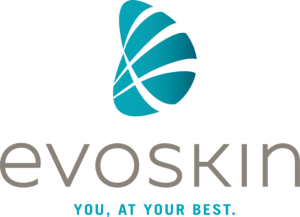Cutting-edge treatments enhance the appearance of visible veins and vascular lesions, prioritizing patient safety.

Cutting-edge treatments enhance the appearance of visible veins and vascular lesions, prioritizing patient safety.
Vascular lesions are skin conditions that occur due to changes in blood vessels. As we age, the blood vessels in our skin can weaken and enlarge in diameter, making them more visible. This anatomical variation can lead to different types of vascular lesions that are recognizable by their location and the type of vessel involved. There are various types of vascular lesions, including varicose veins, port wine stains, telangiectasias, hemangiomas, and rosacea.
Laser treatments can effectively and non-invasively treat various types of vascular lesions, including rosacea, port wine stains, hemangiomas, capillaries, and leg veins. The laser works by constricting blood vessels without damaging surrounding tissue, resulting in the disappearance of leg veins and other vascular imperfections. Recent laser treatments have minimal downtime, discomfort, and side effects.
Laser treatments for vascular lesions offer a variety of benefits over other traditional methods of treatment. The key benefits include:
Overall, laser treatments for vascular lesions provide an effective, safe, and minimally invasive solution for individuals seeking to eliminate the appearance of these lesions.
Vascular lesions are skin conditions that occur due to changes in blood vessels. As we age, the blood vessels in our skin can weaken and enlarge in diameter, making them more visible. This anatomical variation can lead to different types of vascular lesions that are recognizable by their location and the type of vessel involved. There are various types of vascular lesions, including varicose veins, port wine stains, telangiectasias, hemangiomas, and rosacea.
Laser treatments can effectively and non-invasively treat various types of vascular lesions, including rosacea, port wine stains, hemangiomas, capillaries, and leg veins. The laser works by constricting blood vessels without damaging surrounding tissue, resulting in the disappearance of leg veins and other vascular imperfections. Recent laser treatments have minimal downtime, discomfort, and side effects.
Laser treatments for vascular lesions offer a variety of benefits over other traditional methods of treatment. The key benefits include:
Overall, laser treatments for vascular lesions provide an effective, safe, and minimally invasive solution for individuals seeking to eliminate the appearance of these lesions.

Get in touch with the Evoskin team today to learn more about our products, treatments, and services.
Phone: +1.802.EVOSKIN (+1.802.386.7546)
Email: info@evoskin.com


This website uses cookies so that we can provide you with the best user experience possible. Cookie information is stored in your browser and performs functions such as recognising you when you return to our website and helping our team to understand which sections of the website you find most interesting and useful.
Strictly necessary cookies should always be turned on in order to save your preferences for cookie settings.
Se disabiliti questo cookie, non saremo in grado di salvare le tue preferenze. Ciò significa che ogni volta che visiti questo sito web dovrai abilitare o disabilitare nuovamente i cookie.
This Web site uses Google Analytics to collect anonymous information such as the number of visitors to the site and the most popular pages.
Keeping this cookie enabled helps us improve our Web site.
Attiva i cookie strettamente necessari così da poter salvare le tue preferenze!
More information on our Cookie Policy